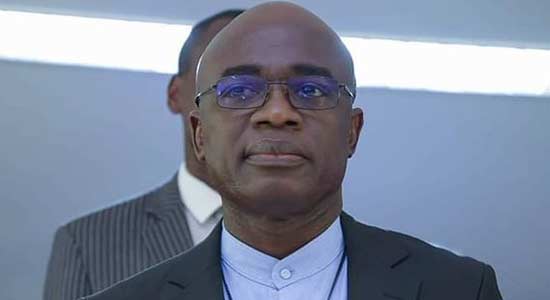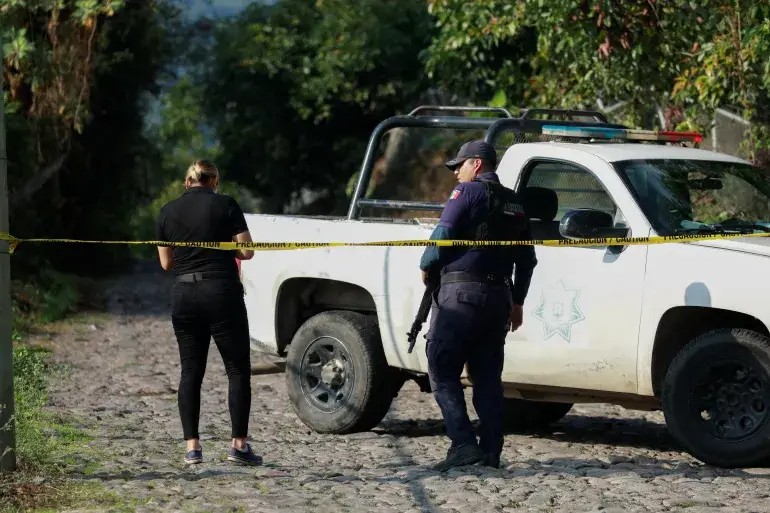“In Lagos, you don’t avoid potholes and craters; you choose the ones to plunge into.” That is one of the popular jokes currently making the rounds among commuters and motorists across Lagos State.
But in truth, it is no idle joke. It is a graphic illustration of the nightmare that Lagos roads have descended into. Roads in Lagos have collapsed, transforming into highways dotted in all areas by monstrous potholes. Each day, commuters groan that they are dying slowly as a result of the state of Lagos roads.
A report by the Federal Bureau of Statistics (FBS) states that Lagos is the smallest state in terms of land mass, and home to about 25 per cent of the total number of vehicles and drivers in Nigeria. It is home to 117 federal roads of 509, 97 kilometres, 3,028 state roads, totalling 5, 816.71 kilometres, as well as 6, 451 local government roads totalling 3, 573.7kilometres.
Constructed decades ago, Lagos roads daily hosts four million cars and 100,000 commercial vehicles. While the national average is 11 vehicles per kilometre, Lagos daily records an average of 227 vehicles per kilometre
With little or no maintenance carried out on most of the roads in years past, they have become overwhelmed by the huge volume of vehicles.
The Economist Intelligence Unit and World Bank, in their 2018 Global Liveability Index, ranked Lagos as the third worst city for humans to live in the world.
A major consequence of Lagos bad road network is the extremely frustrating and traumatising gridlocks that residents are subjected to from dusk till dawn.
Expectedly, anytime there is a gridlock – and that is almost always, these days – the entire city grinds to a halt. Businesses suffer and socio-economic activities collapse. In the end, every facet of life is adversely affected. The perennial traffic congestion also harms the health of commuters.
For many, the roads are a total disaster and harbingers of death. Like sore thumbs, gullies and craters stand out on practically every nook and cranny of these stretches, waiting to claim both wary and unwary victims.
From inner streets, byways, feeder roads to expressways within the three senatorial districts of Lagos, it has been sad pictures of rot and despondency. A ride that should normally not exceed 10 minutes now takes upwards of three hours and sometimes, a whole day. Expectedly, commercial bus operators hike transport fares to over 100 per cent, thus inflicting more pain on the already depressed commuters
This whole scenario is made worse with the virtually everyday downpour that causes unprecedented flooding. The rainy season, no doubt, has further exposed the parlous state of Lagos roads. And for many frustrated commuters, the rains, potholes and traffic snarls seem to be conspiring to shorten their life span. Going by these consistently ugly experiences, they aver that life in Lagos has become brutish.
“The whole road is terribly bad. There is no good road again in Lagos,” was the frustrated response from a commercial bus driver who lamented that he had been trapped in traffic for three hours in Ogba on his way to Ikeja.
Decrying the damages that the bad roads have caused on his car and how his visits to the mechanic had increased considerably, Pius Okoye, said it had become practically impossible to avoid deep potholes on Oba Akran Avenue, Ikeja.
“I don’t understand what is happening in this state anymore,” he lamented. “Everywhere you go, you see potholes. I have stopped driving in the night to avoid killing myself. The way potholes appear on this road is alarming. Your expertise as a professional driver does not count on Lagos roads anymore.”
When the state governor, Mr. Babajide Sanwo-Olu assumed office in May 2019, he assured Lagosians of his resolve to rebuild Lagos, especially by tackling the problem of bad roads headlong.
For many, a ray of hope seemed to have appeared on the horizon. With optimism, they looked forward to better days ahead. But the hopes have been waning.
At a point when the outcry became almost deafening, palliative works were carried out on some roads. But those the purported rehabilitations ended up as disappointing endeavours.
With the rains returning with an undisguised fury, gridlocks have become a daily feature on virtually every road, major or minor.
This prompted Governor Sanwo-Olu, to declare a state of emergency on roads and ordered massive construction works to begin from October 14, 2019.
However, weeks into the much touted state of emergency, Lagos residents are still battling with traffic and killer roads.
Most Lagosians, however, insist that the present administration has not hit the ground running as the roads have continued to degenerate.
Many road users insist that Lagos roads, either newly constructed or refurbished, have not only failed considerably but have maimed and sent many to their untimely graves.
Presently, many communities are at the brink of being cut off completely from other parts of the state.
One such area that experience perpetual lockdown and untold hardship is the Oke-Afa, Ajao Estate Axis. The journey from NNPC, Ikotun, Idimu, Jakande, Isolo and Ejigbo to Ajao Estate through Canoe to Chivita Avenue is a daily nightmare. All access roads in the axis have collapsed irretrievably. The chaos experienced on the deplorable roads is better left to imagination.
Distressed residents of Ajao Estate, who are more on the receiving end, explained that the estate was primarily built as residential and would not have degenerated rapidly if not for the influx of heavy duty trucks.
Read Also: Old Trucks On Nigerian Roads Must Be Changed – FRSC
Streets like Asa-Afariogun, Lateef Salami, Ati Okoye, Adekunle Akala, Ajibade Oke, Osolo Way, Baale Sekoni, among others, have potholes that have become craters.
“We once had good, well constructed roads but the factories and industries here as well as articulated vehicles have contributed to their deterioration. The roads were not built to withstand dead weights,” complained a landlord.
In Apapa, Kirikiri, Satellite Town, Festac and the Old-Ojo Road by Mile 2, commuters’ trauma remains unending.
Those whose businesses and offices are located in these areas sure know what it feels like to be helplessly marooned for hours, days and even weeks.
For years, it has become practically impossible for vehicles to navigate through the labyrinth of gridlocks occasioned by bad roads in these areas.
The Lagos-Badagry Expressway is another road that has continued to unleash untold pain on commuters. Years of neglect and abandonment of the international route after construction works After his inauguration, Governor Sanwo-Olu toured the Lagos-Badagry Expressway and promised that work would resume. That promise is yet to be fulfilled.
Now, virtually the whole stretch has failed on both sides. The perennial gridlock on the road forces motorists to abandon their vehicles at home or at areas considered safe, to be picked up later. Commuters are forced to either board commercial motorcycles or trek to avoid being stuck in traffic.
Bitter traders at the International Trade Fair Complex lamented to the reporter that they are experiencing fast dwindling patronage in their businesses.
Robbers now also take advantage of the pothole-riddled road to ambush and attack motorists and commuters, dispossessing them of their valuables.
At Ojo military cantonment, what is left of the underbelly of the road is a gully filled with murky water.
In the Ajegunle axis, the lamentation is not different. The Orege Mba Road, which connects residents of Ajegunle with Berger Yard and Mile II, has caved in. Residents said they cannot access critical public facilities like Sikiru Adigun Court House, Ajeromi General Hospital and L.A. Primary School located on the road.
Tales emanating from residents of Jakande Estate, along the Cele-Ejigbo Road, Ile-Iwe and Iyana-Ejigbo under the Igando-Ikotun LCDA, is that of anguish. Commuters insist the state government has abandoned them to their fate.
The entire stretch of Ikotun-Ejigbo-Isolo road has been overtaken by widening craters, especially at NNPC Bus Stop. Yet the road acts as a link to several densely populated suburbs tucked in the axis.
At peak traffic time, motorists are forced to move at a snail speed. They glide into craters and meander through potholes to get to their destinations.
Okota road, especially by Gideon and Chemist Bus Stop, is no different. Here, commuters drive through ravaged roads to connect Cele Bus stop or Ago Palace Way.
Roads within Ire-Akari Estate, which ordinarily should be viable alternative routes, have also become riddled with giant potholes. An attempt to escape the Okota gridlock by plying roads snaking through St. Mary Catholic Church, Apata Memorial High School and the Mobil filling station to connect Ilasamaja Industrial Estate sometimes leads to regret.
The desperation to find a way out of the bedlam usually results in motorists forming multiple lanes on narrow streets meant for just two vehicles. At the end, tempers flay and fights usually ensue.
Residents of Ikorodu believe they are being punished by the Lagos State government for an offence they are yet unaware of.
Presently, heading in and out of Ikorodu is hell. It is total bedlam from sunrise to sundown. Left with no alternative route out of the area, motorists daily suffer endlessly, marooned on a spot for hours as their vehicles crawl along the road. A journey that should ordinarily take a few minutes now slowly drags into hours. Here, different theatres of the absurd play out each day.
Traffic congestion stretches from Kosofe, where a bad spot has been causing traffic for months, through Mile 12 to Majidun or Ogolonto. On three occasions in the last few months, the Lagos State Public Works Corporation has closed the main expressway between Mile 12 and Ketu, purportedly to repair the bad section. But nothing positive has come out of it, as the road usually collapses two or three days after the repairs.
Those living along Ijede Road have been experiencing sheer hell since the rainy season commenced. Repair works were last done on the road, stretching from Itamaga to Ijede and Gberigbe, during the Babatunde Fashola administration. Since the days of Akinwunmi Ambode, the road and its users have been abandoned. Ijede Road was among those on which an emergency was declared by Governor Sanwo-Olu last month. Shortly after, Arab Contractors moved a number of vehicles to the area. But no work was ever done. The vehicles have since disappeared and the people left to their fate.
People living in communities along the Ishawo Road are also in perpetual agony, just as those living along Igbogbo and Ebute-Ipakodo Roads. Passing through these impassable roads is quite hellish.
There are also failed portions on Ojota inward Ketu, Maryland Bridge, Anthony Village and Mende, as well as Ipodo, Adeniyi Jones, Acme Road, Oba Akran and Oduduwa Crecsent in Ikeja.
In Orile-Agege area, Ipaja road, Iyana-Ipaja Roundabout, NYSC Camp to Agege, Capitol Intersection and Mosalalashi Roundabout have all failed completely.
In the Agege Local Government Area, roads running through Akilo, Agege Market, Pero Pharmacy, Ogba Central Mosque, Yaya Abatan, College Road and Akinwale by the Celestial Church of Christ church, among others are areas also begging for immediate attention.
In Shomolu, Palm Grove Bus Stop to Ladylak, commuters are also in pain.
Other areas crying for complete reconstruction include; Herbert Macaulay Way in Yaba, Mafoluku, Oshodi, Isolo, Osolo Way, Ogudu, Ketu, Mushin, Ijegun, Ilupeju, Surulere, Bariga, Oke-Odo, Agege Motor Road, Lagos-Abeokuta Expressway up to Ikeja Along, Lagos-Ibadan Expressway, Oworosoki- Oshodi Expressway, Oshodi-Apapa Expressway, Ikorodu Road, Funsho-Wiliams Avenue, Ekoro Road, Abule Egba, Egbeda-Idimu Road, Otto-Wharf and Boundary Road. Roads in Lawanson, Iyana Itire, Ilasa, Idi-araba, Gbagada, Oyingbo, Ogba, Alapere-Ketu, also remain embarrassingly decrepit.
For Lagos residents, they are tired of living in hell. They want Governor Sanwo-Olu to match his words with action and make their lives better by fixing the killer roads in Lagos.
DAILY SUN










